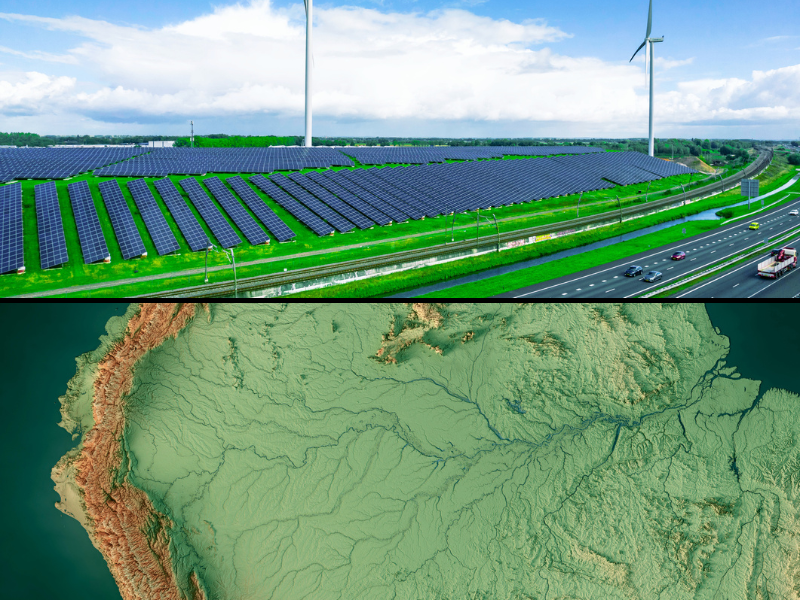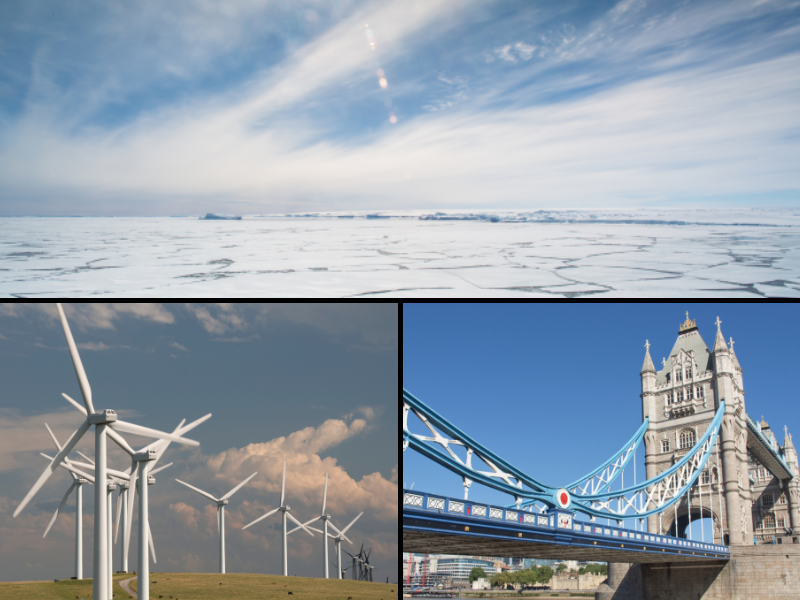Aging power plants, refineries, and factories will have greater flexibility in updating their equipment and meeting Clean Air Act requirements, the Bush administration announced November 22. The changes affect the federal government’s interpretation of the New Source Review provisions of the Clean Air Act.
NSR Mandates
The Clean Air Act of 1970 (CAA) required newly constructed industrial plants and utilities to install the best available pollution-abatement technology. In 1977 amendments to the CAA, Congress created New Source Review to reduce air pollution from existing facilities. The program requires existing facilities to update their pollution abatement technologies whenever undergoing a major expansion or refurbishment that would result in significant emission increases. From their inception, EPA consistently interpreted and enforced the New Source Review mandates according to the plain language of the statute. Periodic maintenance, repairs, and routine upgrades did not subject facilities to mandatory pollution technology upgrades.
In 1999, however, the Clinton EPA embarked on an unprecedented departure from the plain language interpretation of New Source Review mandates. Although Congress had intended New Source Review to apply only to major projects that increase air emissions, EPA began calculating emission “increases” in a manner such that common maintenance, routine repairs, and routine upgrades subjected existing facilities to costly, mandatory technology overhauls.
The Clinton-era mandates took American industry by surprise. Maintenance and repair decisions made according to predictable and consistently enforced EPA guidelines were suddenly and retroactively challenged by EPA as unlawful. As a result, businesses delayed implementing current and future maintenance and repairs, uncertain as to whether New Source Review regulations would be applied to them. Efforts to improve the efficiency of industrial facilities and reduce pollutant emissions were being postponed until more reliable enforcement standards could emerge.
June 2002 Proposals
On June 13, 2002, EPA officials admitted the agency had over-reached in 1999. Specifically, EPA issued a report calling for a return in many ways to the pre-1999 New Source Review standards.
The EPA report offered seven recommendations, four of which were first proposed by the Clinton EPA in 1996:
- simplify the application process for pollution control projects;
- establish plantwide applicability limits to provide facilities with greater flexibility to modernize operations without increasing air pollution;
- offer flexibility in installing pollution abatement equipment without requiring major refurbishments;
- change the emissions baseline calculation away from an assumed 24-hour-a-day full running capacity.
Three of the recommendations were new:
- clarify and simplify the definition of routine maintenance, repair, and replacement;
- streamline processes regarding partial facility upgrades;
- simplify criteria for aggregating multiple simultaneous projects.
“Our reforms will remove the obstacles to environmentally beneficial projects, clarify NSR requirements, encourage emissions reductions, promote pollution prevention, provide incentives for energy efficient improvements, and help assure worker and plant safety,” EPA noted. “Overall, our reforms will clarify and simplify the program so that industry will be able to make improvements to their plants that will result in greater environmental protection.”
Importantly, noted EPA, “The basic elements of the NSR program remain in place. All new major sources of air pollution will need to comply with the best control technology and existing sources which make major modifications and have a significant increase in actual emissions also will have to meet these requirements. The reforms simply clarify which changes at existing sources can be made without triggering NSR.”
November 2002 Confirmation
The November 22 announcement assured that most of the June 2002 recommendations would be implemented.
“EPA is taking actions now to improve NSR and thereby encourage emissions reductions,” said EPA Administrator Christie Whitman in a news release. “The steps we are taking today recognize that some aspects of the NSR program have deterred companies from implementing projects that would increase energy efficiency and decrease air pollution.”
The most important revisions will now allow facility owners to:
- calculate their emissions on a plant-wide basis rather than for individual pieces of equipment;
- exempt a facility from equipment updating if the government has already reviewed its existing emission controls within the past 10 years;
- set the baseline emission level at the highest annual level during the past decade when determining if new emissions require new controls;
- exempt secondary emissions that result from new pollution abatement equipment addressing other types of emissions.
Additionally, the new revisions contemplate EPA updating its standards for defining what constitutes routine maintenance that triggers the NSR regulations. Under one proposal, a facility could spend up to 10 or 20 percent of its replacement value for improved safety or efficiency measures before triggering NSR review. Another proposal would allow functionally equivalent replacements of existing equipment–provided the replacements do not constitute a major revision or renovation–without triggering NSR review. The final details have yet to be ironed out.
Mixed Reactions
Not all response to the EPA announcement was positive.
“This early Christmas gift to industry means more pollution and less protection,” said outgoing Senate Environmental Committee Chairman Jim Jeffords (I-Vermont).
“This is bad news for anyone who breathes,” added Sierra Club Executive Director Carl Pope.
Others disagreed, noting the NSR revisions will “remove the perpetual threat of litigation now hanging over the heads of power plant operators facing different decisions about whether to proceed with critical maintenance,” explained Edison Electric Institute (EEI) spokesman Dan Riedinger.
“Facilities [were] discouraged from undertaking routine actions for fear of huge penalties or long delays or both,” agreed the International Brotherhood of Boilermakers in a letter to Whitman.
Some industry representatives expressed regret the revisions were not more specific. “The central question is what level of maintenance activity triggers the need for New Source Review,” said Scott Segal, director of the Electric Reliability Coordinating Council. “Today’s package just offers options regarding maintenance.”
EEI Executive Director Quin Shea was similarly concerned regarding current and future federal litigation. “We are pleased that EPA is starting to move the ball down the field on an issue that has plagued us for years. But we’re frustrated that the agency has stopped short of advancing a specific proposal that would remove the perpetual threat of litigation hanging over the heads of power plant operators.”
EPA General Counsel Bill Wehrum confirmed industry fears regarding ongoing litigation. “We are absolutely dead-set committed to the existing lawsuits that we have filed,” said Wehrum. “There is no question that those power plants are liable under the law that existed when they broke it.”
Plant owners are not the only ones who will have to contend with ongoing and future litigation. EPA itself will likely be sued over the new standards, as nine northeastern states have announced they will sue to preserve EPA’s prior NSR interpretation.
James M. Taylor is managing editor of Environment & Climate News.




